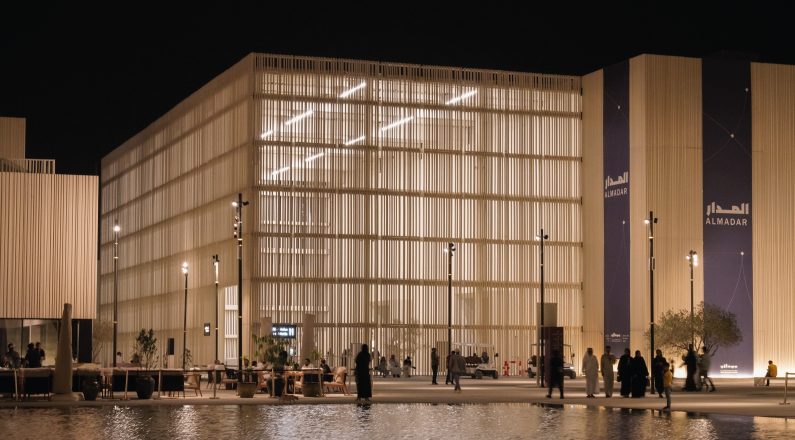(ZENIT News / Rome, 09.25.2024).- In an unprecedented cultural exchange, the Vatican Apostolic Library will participate in the 2025 Islamic Art Biennale, set to take place in Jeddah, Saudi Arabia, from January 25 to May 25, 2025. Hosted at the Hajj Terminal of King Abdulaziz International Airport—a gateway for millions of Muslim pilgrims—the event promises to be a landmark in fostering cross-cultural dialogue, with the Vatican’s contribution standing as a symbolic gesture of unity and mutual respect.
Building Bridges in a Divided World
The Vatican’s participation in this biennale is remarkable not only for its cultural significance but also for its broader message of reconciliation. Saudi Arabia and the Vatican do not maintain diplomatic ties, and religious restrictions in the kingdom prevent public Christian worship, including the possession of Bibles. Yet, by joining this event, the Vatican is making a clear statement: that art, knowledge, and the shared heritage of humanity can transcend borders and ideological divides.
The biennale, organized by the Diriyah Biennale Foundation, is a platform for celebrating the rich heritage of Islamic art in a contemporary context. Following the success of the inaugural edition in 2023, which drew over 600,000 visitors, the 2025 iteration is poised to further enhance this global conversation. It is not just an art exhibition—it is an invitation to explore connections between the past and the present, between different faiths, and across cultures.
Vatican Library’s Unique Contribution: Numbers as a Cultural Link
One of the key highlights of the Vatican Library’s participation will be its role in the “AlMadar” section, which focuses on the concept of numbers within Islamic civilization. This section will delve into the critical role that numbers have played in shaping not only scientific advancements but also artistic and spiritual developments in the Islamic world. The inclusion of artifacts from the Vatican’s collection underlines the universality of mathematics and its power to forge connections across vastly different societies.
The Vatican’s contribution, which includes historical manuscripts and rare volumes, will explore how mathematical principles, from simple counting to complex astronomy, have been a common thread in human development. As Vatican Library Prefect Don Mauro Mantovani noted, numbers have always been more than mere tools—they have been the basis for building bridges between cultures, whether in navigation, architecture, or religious thought.
A Fusion of History, Science, and Spirituality
The biennale will span 110,000 square meters, offering visitors a multisensory journey through the intricate intersections of the ancient and contemporary Islamic worlds. By presenting Islamic art alongside Vatican manuscripts, the event aims to create a unique narrative that highlights the shared intellectual and artistic endeavors of humanity. The mathematical and geometric designs that have shaped Islamic art for centuries will be juxtaposed with the Vatican’s contributions, demonstrating how numbers have shaped both scientific innovation and spiritual reflection across cultures.
Monseigneur Angelo Zani, the Vatican’s chief librarian, has emphasized that the collaboration is not just a showcase of historical artifacts—it is a “symbol of fraternity through universal elements.” He views the biennale as an opportunity to reflect on how humanity’s pursuit of knowledge has fostered understanding and unity. By focusing on mathematics as a shared language, the exhibition will highlight how different civilizations have built on each other’s achievements.
A Cultural Milestone in Global Dialogue
The inclusion of the Vatican in this event marks a new chapter in cultural diplomacy. While relations between Saudi Arabia and the Vatican have historically been complex, this partnership signifies a softening of boundaries, at least in the realm of cultural exchange. The biennale will be an opportunity for dialogue, with the Vatican Library’s contribution serving as a reminder of the shared intellectual and spiritual heritage that binds different civilizations together.
Directed by a global team, including Islamic scholar Abdul Rahman Azzam and former Smithsonian curator Julian Raby, the biennale will also feature the work of Saudi artist Muhannad Shono, whose vision explores spirituality in contemporary art. This blending of historical treasures with modern interpretations will create an environment that encourages visitors to contemplate the ongoing relevance of ancient knowledge systems, including the significance of numbers in art, architecture, and theology.
A Path Toward a Shared Future
The 2025 Islamic Art Biennale in Jeddah is more than a cultural event—it is a symbol of the potential for human connection through the arts and sciences. The inclusion of the Vatican Library underscores the belief that despite our religious or political differences, there are universal truths that bind us together. Mathematics, as explored in the «AlMadar» section, is one such truth, offering a common ground for understanding across time and space.
As the world becomes increasingly interconnected, events like this biennale are vital for fostering mutual respect and understanding. By participating, the Vatican is not only preserving knowledge but also contributing to a future where dialogue and collaboration replace division and conflict.
Monseigneur Zani has called this event a “celebration of diversity” that builds bridges between the past, present, and future. As visitors from all corners of the globe make their way through the biennale, they will encounter art and artifacts that invite them to reflect on the power of shared human experiences, the beauty of diverse cultures, and the possibilities for a future of greater understanding.
The 2025 Islamic Art Biennale, with its unprecedented collaboration between the Vatican and the Islamic world, is set to be a cultural highlight of the year. Through the lens of numbers, visitors will explore the deep connections that unite us all—past, present, and future.
Thank you for reading our content. If you would like to receive ZENIT’s daily e-mail news, you can subscribe for free through this link.



